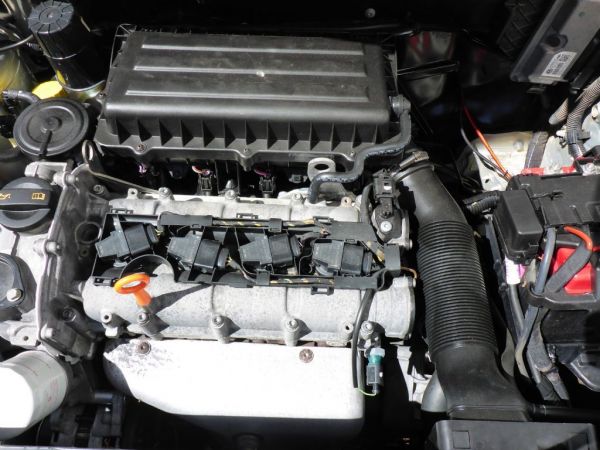Install a state-of-the-art clp engine for better performance.
How a Clp Engine Can Boost Efficiency in Numerous Industries
The development of CLP engines notes a considerable change in operational performance across different sectors, driven by their capability to optimize fuel intake and reduce downtime. Industries such as production and logistics stand to gain significantly from their robust style and constant power outcome, which guarantee to improve operations and improve performance. As organizations progressively prioritize sustainability together with performance, the role of CLP engines comes to be much more crucial. What continues to be to be seen is just how these innovations will shape the future landscape of industrial procedures and their influence on wider financial fads (clp engine).
Review of CLP Engines
CLP engines, or Continual Fluid Propellant engines, represent a significant development in propulsion technology, particularly for room applications. These engines use a continual feed system that enables for the sustained expulsion of propellant, leading to boosted effectiveness and performance contrasted to conventional solid or hybrid propulsion systems. By keeping a continuous flow of fluid propellant, CLP engines can achieve extra exact thrust control, which is crucial for maneuvering spacecraft in numerous objective scenarios.
The style of CLP engines integrates innovative materials and cutting-edge fuel monitoring systems. clp engine. This results in reduced weight and raised reliability, crucial aspects for long-duration space objectives. Additionally, the continual operation minimizes the threat of combustion instability, a common difficulty in conventional rocket engines.

Benefits in Manufacturing
The manufacturing of Continuous Fluid Propellant (CLP) engines offers numerous significant advantages that boost both performance and cost-effectiveness. Among the main benefits is the streamlined production procedure, which minimizes the complexity related to traditional propulsion systems. By using fluid propellant, producers can achieve better accuracy in engine performance, resulting in optimized power outcome and decreased waste.
Furthermore, CLP engines assist in a higher degree of modularity, permitting for less complicated combination into various production lines. This adaptability can significantly decrease preparations and improve total operational versatility. Making use of CLP innovation also tends to lessen the requirement for comprehensive upkeep because of less moving components, which equates right into minimized downtime and functional costs.

Applications in Logistics
Leveraging Continual Fluid Propellant (CLP) engines in logistics supplies substantial benefits in functional performance and integrity. These engines supply a durable option for different transportation needs, enabling the seamless movement of items throughout huge ranges. The fundamental style of CLP engines permits consistent power result, which equates into smoother and a lot more foreseeable transport routines.
One of the key applications of CLP engines in logistics remains in sturdy freight transport, where they can drive both ground and airborne lorries. Their capability to preserve high performance under differing tons conditions ensures that delivery timelines are fulfilled, consequently enhancing client contentment. Furthermore, CLP engines can be integrated right into automated logistics systems, assisting in real-time tracking and maximizing path planning.
In addition, the durability of CLP engines lowers maintenance downtime, permitting logistics business to maximize their functional capabilities. This is specifically useful in warehousing operations, where effectiveness in dealing with this website and transporting products is crucial. As logistics proceeds to develop, the assimilation of CLP engines represents a forward-thinking strategy that not only boosts performance yet also sustains the industry's expanding needs for integrity and rate.
Influence On Power Efficiency
How do Constant Liquid Propellant (CLP) engines enhance power performance in transport? CLP engines utilize a consistent circulation of liquid gas, maximizing burning procedures and preserving a secure drive result. This style minimizes energy losses related to conventional burning engines, where gas delivery can their explanation vary and cause inefficiencies.
The continuous operation of CLP engines enables a more efficient thermal cycle, leading to greater details impulse contrasted to conventional engines. clp engine. This translates to decreased gas intake for the very same amount of work done, significantly reducing operational expenses throughout different transport fields, consisting of aeronautics and maritime sectors
In addition, the capacity of CLP engines to keep optimum efficiency under differing lots problems minimizes the demand for constant velocity and slowdown, even more improving fuel effectiveness. Improved energy efficiency not only adds to set you back financial savings however likewise results in reduce greenhouse gas emissions, aligning with global sustainability objectives.
Future Trends and Innovations
Arising innovations in Constant Liquid Propellant (CLP) engine technology promise to revolutionize the landscape of transport efficiency and sustainability. As sectors pivot toward greener alternatives, CLP engines stand at the forefront, incorporating cutting-edge materials and design methodologies that boost efficiency while minimizing environmental impact.
Among the most appealing fads is the fostering of hybrid systems that combine CLP engines with renewable power sources. This synergy can maximize fuel consumption and lower discharges, aligning with international sustainability objectives. In addition, innovations in computational fluid characteristics (CFD) are promoting the style of even more aerodynamically effective engines, leading to lowered drag and improved gas effectiveness.
Furthermore, the advancement of clever monitoring systems is established to improve functional efficiencies. These systems take advantage of data analytics and IoT innovation to maximize engine performance in real-time, making sure that the engines run within their most efficient specifications.
As research continues to discover alternative propellant formulas-- such as biofuels and artificial fuels-- the future of CLP engines looks appealing. By taking advantage of these innovations, markets can not just boost their performance however also add dramatically to a cleaner, extra sustainable future in transport.
Final Thought
In conclusion, CLP engines stand for a substantial advancement in performance throughout numerous markets. The combination of sophisticated materials and less moving components decreases upkeep demands, while positioning with sustainability goals positions CLP engines informative post as a crucial modern technology for the future.